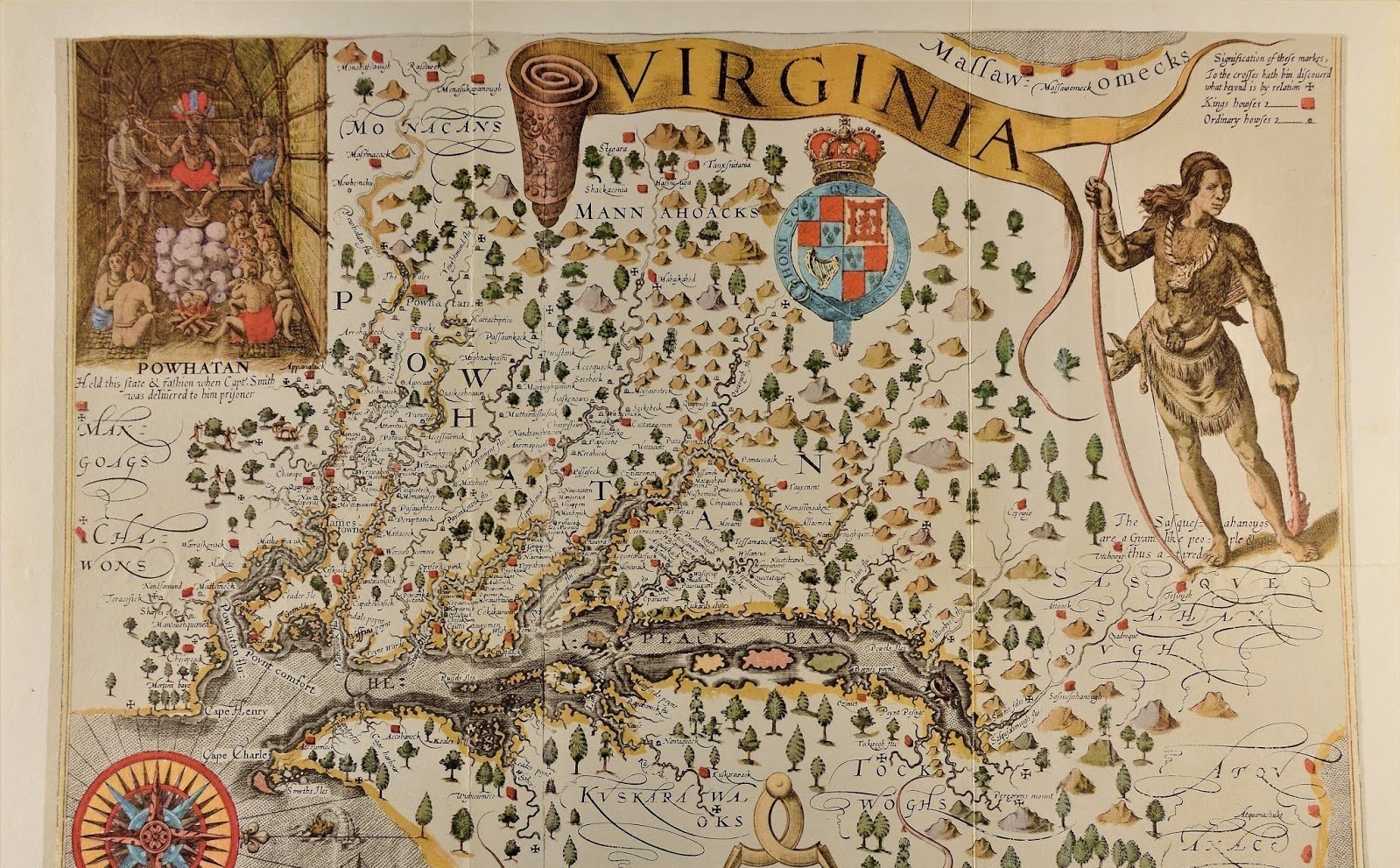In 1608, English explorer John Smith became the first settler to interact with our ancestors on the Susquehanna river, and met them near the large palisaded village in what is now Washington Boro, Pennsylvania. Smith noted the military prowess of the Susquehannocks and their rivalry with the Massawomekes, a fellow Iroquoian tribe in western Maryland. Smith also reported that our ancestors already possessed hatchets, knives, and brass ornaments of French origin, no doubt a result of trade facilitated by the Susquehanna river. From this point of contact onward, our ancestors, like many Native American tribes at the time, sought to dominate the fur trade.
Our strategic location along the Susquehanna River facilitated that dominance, as it positioned our ancestors to engage with both English traders in the Chesapeake Bay area and Dutch/Swedish traders in the Delaware Bay. Though there was initially hesitancy among Europeans to trade firearms to the Indigenous populations, the Susquehannock people began acquiring muskets in the 1630s. The turbulent years of fur trading that followed would prove devastating to the Indigenous peoples of the whole region, as greed and demand for fur fueled conflict with the emerging colonies and between tribes, leaving our ancestors unable to defend themselves from the seemingly endless encroachment of settlers arriving from England, France, Sweden, and Holland.
In 1626, a delegation from the Susquehannock journeyed to New Amsterdam, seeking a trade alliance with the Dutch. However the Susquehannock's path to Dutch trade involved traversing Lenape territory, leading to conflicts between our two tribes documented by English explorer Thomas Yonge in 1634. However, by 1638, an accord had been reached that established the Lenape as a tributary of the Susquehannock, allowing Susquehannock access to trading posts in Lenape territory. This arrangement reflects our long history of inter-tribal communities, as our people would later find refuge among the Lenape.
In 1631 English merchant William Claiborne established the first permanent settlement in Maryland, Kent Island, in order to facilitate trade with our Susquehannock ancestors. While this was beneficial for trading, it also led to more conflict when the Providence of Maryland was established 3 years later in 1634. The newly minted English colony of Maryland allied with the Piscataway tribe, a frequent target of Susquehannock raids. When Maryland seized Kent Island in 1637, it further exacerbated tensions and restricted trade access for the Susquehannock on behalf of Maryland’s Piscataway allies. This resulted in our ancestors focusing trade efforts among the Swedish on Delaware bay.
In 1641, a raid on a Jesuit mission prompted the governor of Maryland to declare the Susquehannock “enemies of the province”, marking a shift in the relationship between our ancestors and the developing state of Maryland. In 1643, the English settlers of Maryland attempted to execute a military campaign on the Susquehannock, which was unsuccessful. The English suffered many casualties and the loss of two cannons. ln response to this attack by the English, the Susquehannock continually raided settlements in Maryland until 1652.
Gallery:
In 1652 the Susquehannock were attacked by the Mohawk from the north, and this created a need to consolidate risks and form alliances. On July 5th of that same year, leaders of the Susquehannock met with leaders of the Province of Maryland, who also had no desire to tangle with the Mohawk and Haudenosaunee tribes, and signed the Articles of Peace and Friendship. Sawahegeh, Aurotaurogh, Scarhuhadih, Ruthcuhogah and Wathetdianeh signed the agreement along with Richard Bennett, Thomas March, William Fuller, Leo Strong and Edward Lloyd. In exchange for ceding land on the side of the Susquehanna river in what would become the state of Maryland our ancestors were granted more men, cannons, and ammunition.
Contrary to some historical narratives, the Articles of Peace and Friendship did not mark the end of our history with the state of Maryland. Just 8 years later, in 1660, conflicts with the Iroquois escalated when the Oneida, another Haudenosaunee tribe, led a raid on the Piscataway allies of Maryland. This led to Maryland authorities seeking the assistance of our Susquehannock ancestors in creating a defensive buffer against the northern Haudenosaunee tribes. These tribes were highly organized and extremely well resourced compared to most other tribes in the region, and collectively formed the oldest continous representative democracy in the world. Describing our ancestors as the “security of the northern parts of this province”, Maryland officially designated the Susquehannock as allies and provided 50 men and additional supplies dedicated to defending our territory to the north of the province
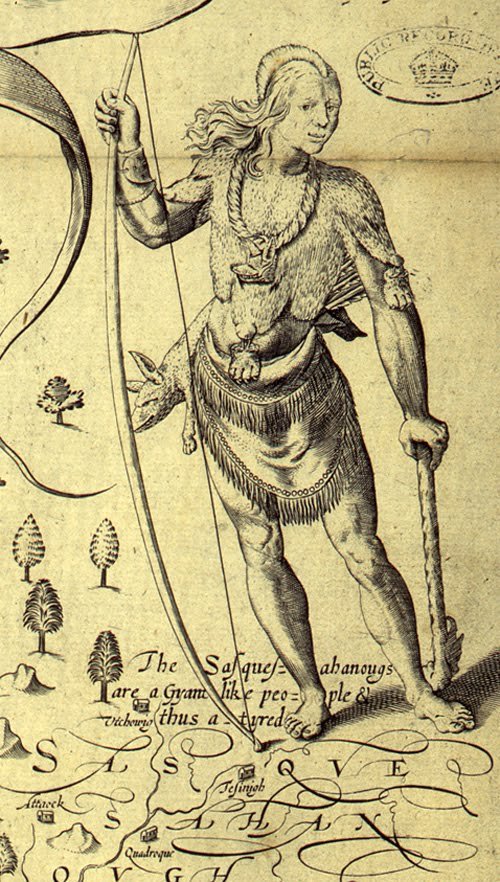
John Smith's drawing of the Susquehannock he met in what is now Washington Boro, Pennsylvania.
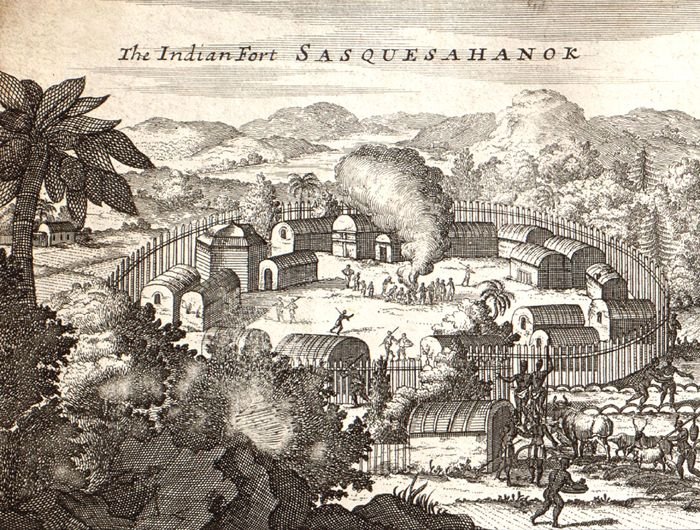
An illustration of a Susquehannock village from 1720 by cartographer Herman Moll. Note the palisaded fence along the edge. It is this building practice that informs the name "Conestoga", which means "the place of the upright ridge pole" in Conestoga language.
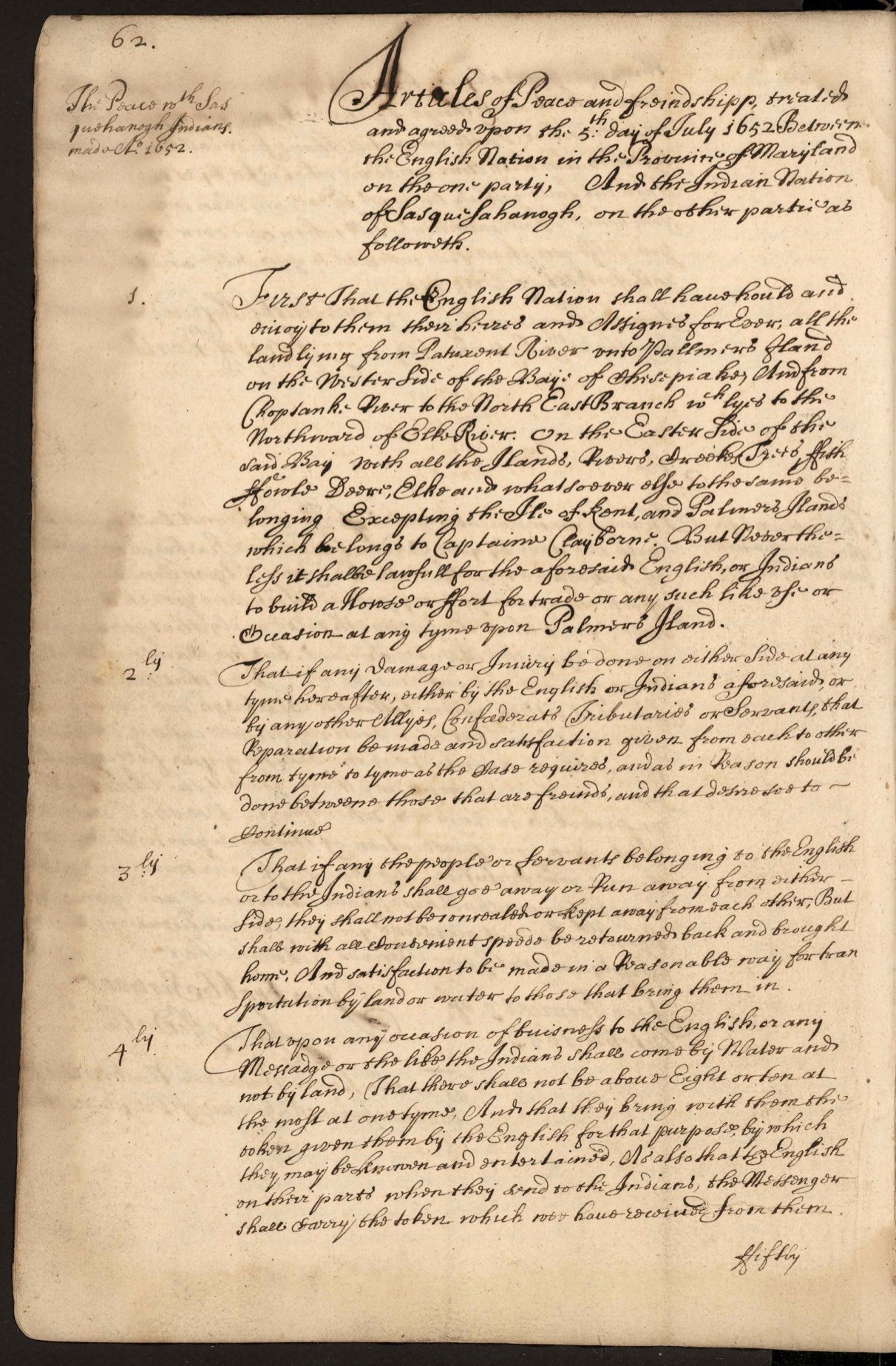
The first page of our treaty of peace and friendship with the province of Maryland
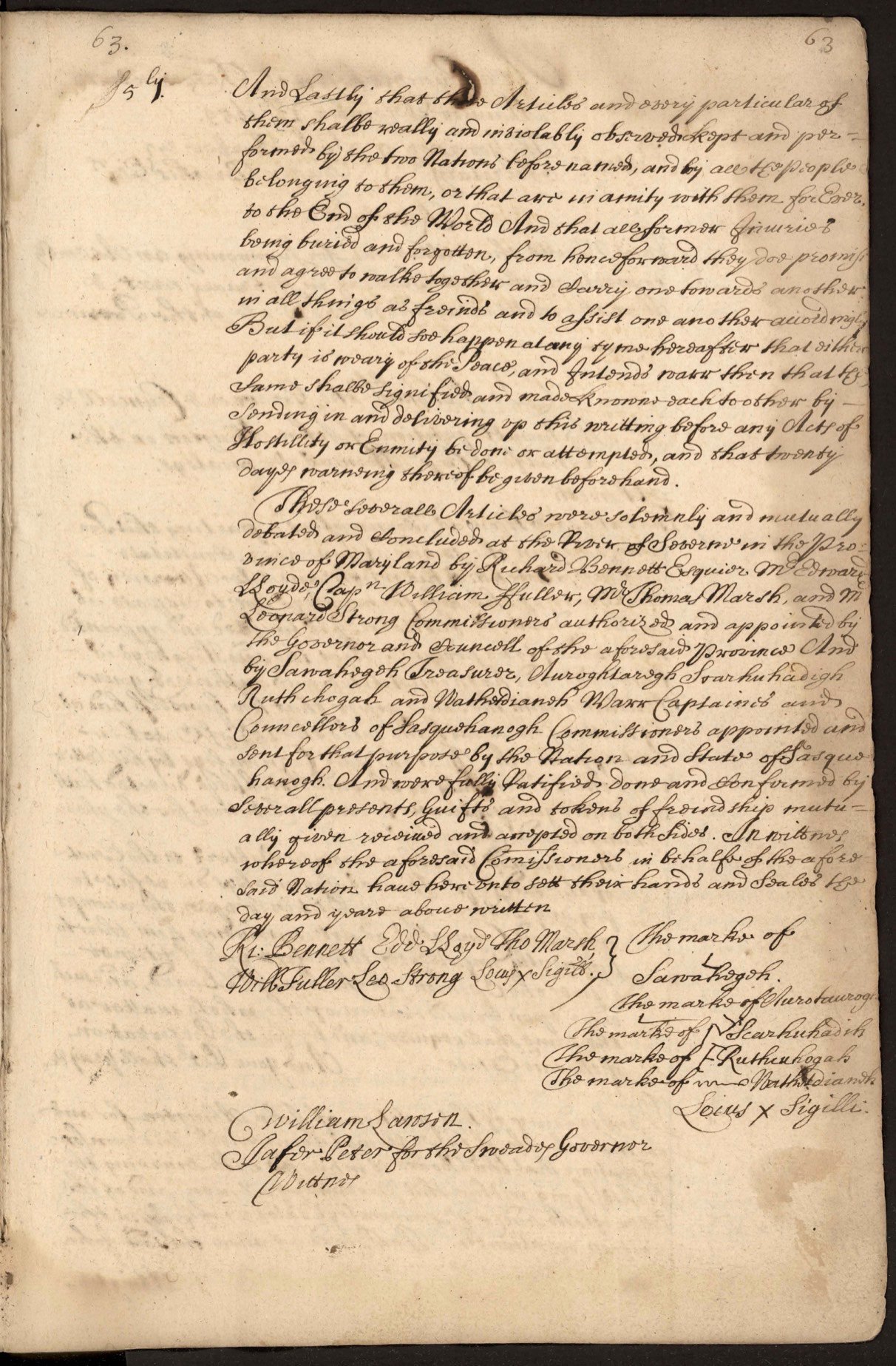
The second page of our treaty in alliance with the providence of Maryland.

